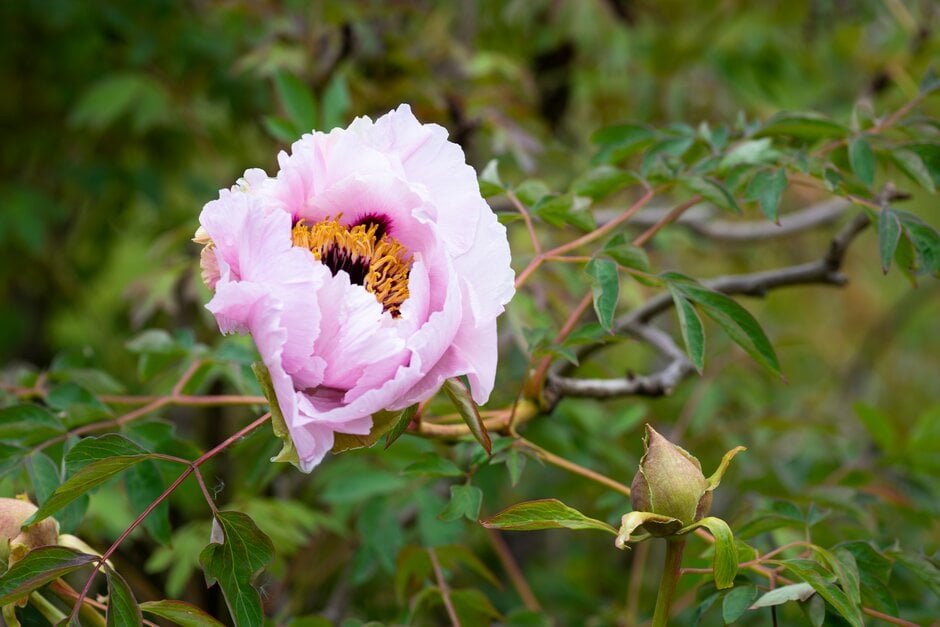Paeonia (Gansu Group) 'Highdown' (S)
peony 'Highdown'
A large, deciduous perennial shrub with an interesting history (see article on RHS website). It has dark green, hairy leaves and very large and showy rose-scented pale purple flowers with dark purple markings in the centre, which age to white, appearing in the summer
Synonyms
Paeonia × suffruticosa 'Highdown'Paeonia rockii 'Joseph Rock'
see morePaeonia 'Joseph Rock' not Klehm
Paeonia rockii 'Rock's Variety'
Paeonia × suffruticosa 'Joseph Rock'
Paeonia × suffruticosa Rock's form
Paeonia rockii misapplied
Paeonia rockii hybrid

Buy this plant
Size
Ultimate height
1.5–2.5 metresTime to ultimate height
5–10 yearsUltimate spread
1.5–2.5 metresGrowing conditions
Moisture
Well–drainedpH
Acid, Alkaline, NeutralColour & scent
| Stem | Flower | Foliage | Fruit | |
| Spring | Green | |||
|---|---|---|---|---|
| Summer | White Purple | Green | ||
| Autumn | ||||
| Winter |
Position
- Full sun
- Partial shade
Aspect
South–facing or West–facing
Exposure
Sheltered Hardiness
H6Botanical details
- Family
- Paeoniaceae
- Native to GB / Ireland
- No
- Foliage
- Deciduous
- Habit
- Bushy
- Potentially harmful
- Pets (dogs, cats): Skin irritant. For further information and contact numbers regarding pets, see the HTA guide to potentially harmful plants
- Genus
Paeonia may be herbaceous perennials or deciduous sub-shrubs with large, divided leaves and showy large bowl-shaped flowers, usually in early summer
- Name status
Accepted
- Horticultural Group
- Shrubby peonies are sparsely branched deciduous shrubs leaves divided into several finger-like lobes, and bowl-shaped flowers in late spring or early summer
How to grow
Cultivation
Best grown in neutral, humus rich soils, but slightly acid or slightly alkaline soils are tolerated. Good drainage is essential. Ideally, plant in a sunny position. Can be grown in light shade, but the plants may become straggly. Fully hardy, but young foliage and flowers can be damaged by late frost. See tree peony cultivation for further information
Propagation
Propagate by seed, seeds are doubly dormant needing two winters to germinate. There is a good chance that the young plants will be true to type or similar. Propagate by grafting, from semi-ripe cutting or try layering
Suggested planting locations and garden types
- City and courtyard gardens
- Cottage and informal garden
- Flower borders and beds
Pruning
Pests
May be susceptible to leaf and bud eelworm and soil-dwelling swift moth larvae
Diseases
May be susceptible to a virus, honey fungus, Verticillium wilt, peony leaf blotch and peony wilt
Get involved
The RHS is the UK’s gardening charity, helping people and plants to grow - nurturing a healthier, happier world, one person and one plant at a time.